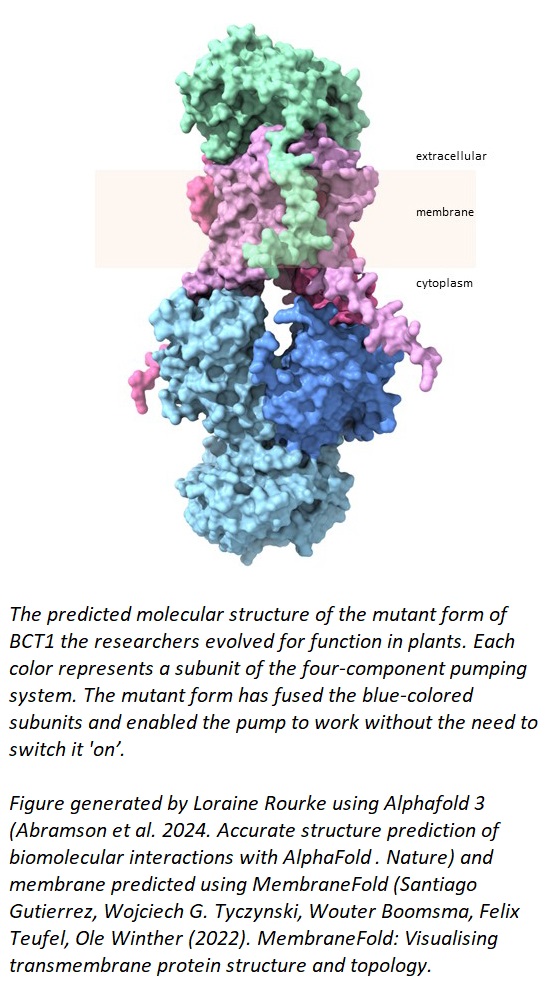Scientists Engineer CO2-Boosting Protein to Supercharge Plant Photosynthesis
Scientists have introduced a specialized protein complex into the chloroplasts of plants to deliver more carbon dioxide (CO2) to the enzyme responsible for carbon fixation during photosynthesis. Accomplishing this difficult task is a major step towards the researchers’ goal of improving photosynthesis to contribute to sustainable food production around the world.
It is broadly accepted that photosynthesis, the natural process all plants use to convert sunlight into energy and yields, is not as efficient as it could be. While this is true for plants, Cyanobacteria, a type of microscopic, algae-like bacteria that inhabit freshwater and marine waters, have mastered photosynthesis through evolution. In aquatic environments, the CO2 needed for photosynthesis reacts with water to form a compound called bicarbonate. Within cyanobacteria, bicarbonate transport proteins bring bicarbonate into the cell to convert it to CO2 for photosynthesis. A collaborative team from the Australian National University (ANU), the University of Newcastle (UoN), and Louisiana State University (LSU) set out to insert this bicarbonate transport proteins from bacteria into plants, to see if plants could have the same improvements in photosynthetic efficiency.
Previous research in this area has succeeded in expressing these transport proteins in plants, but the earlier  attempts relied on proteins that also transported sodium ions, sometimes making the plants sick. To try and avoid this pitfall, the group started with a four-part transporter known as Bicarbonate Transporter 1 (BCT1) which does not require other ions to work. This solved one issue, but they would have to figure out how to turn on, or activate BCT1 once it was in the plant in order for it to work. The process the group went through to overcome this challenge, and directions this work could lead, are detailed in a recent study, published in the Journal of Experimental Botany.
attempts relied on proteins that also transported sodium ions, sometimes making the plants sick. To try and avoid this pitfall, the group started with a four-part transporter known as Bicarbonate Transporter 1 (BCT1) which does not require other ions to work. This solved one issue, but they would have to figure out how to turn on, or activate BCT1 once it was in the plant in order for it to work. The process the group went through to overcome this challenge, and directions this work could lead, are detailed in a recent study, published in the Journal of Experimental Botany.
“Our work expands on foundational studies to focus on BCT1, which has not been extensively studied before,” said Sarah Rottet, first co-author on the study and a postdoctoral research fellow in the Price Lab at ANU. “Developing strategies to ensure precise localization and functional activation in plant chloroplasts represents a significant advancement in the field of synthetic biology and plant biotechnology.”
BCT1 delivers CO2 from the air to the chloroplast of the plant, where it is converted into sugars which are essential for growth. For BCT1 to increase the amount of CO2 plants can intake, it needs to be placed at a specific location on the inner membrane of the chloroplast. Even after the transporter is placed, they often require specific circumstances to be activated. When a protein is removed from the cyanobacteria and put into a host plant, the circumstances and environment required to activate it may not exist, so scientists must consider how to activate the transporter when implanting it.
Despite these obstacles, the team was able to achieve their goal of correctly targeting the four proteins of the BCT1 complex to the chloroplast of a model plant. They also isolated an always-active form of BCT1 by mimicking natural selection in a laboratory setting. The researchers are looking forward to further testing and optimization of BCT1 in both their model plant and target crop species in order to boost photosynthetic performance and carbon capture.
“While we made significant strides in engineering a complex protein transporter for enhancing carbon dioxide uptake in plants, achieving this goal is more challenging than initially anticipated,” said Dr Rottet. “This research underscores the importance of precisely targeting and activating these transporters within plant cells. Despite the hurdles, our study provides a detailed roadmap and new tools for future efforts aimed at boosting photosynthesis and improving crop yields.”
This work was conducted as part of Realizing Increased Photosynthetic Efficiency (RIPE), which, led by the University of Illinois, is engineering crops to be more productive by improving photosynthesis. RIPE was supported from 2017-2023 by the Bill & Melinda Gates Foundation, Foundation for Food & Agriculture Research, and U.K. Foreign, Commonwealth & Development Office.
